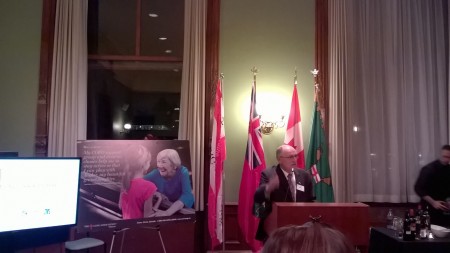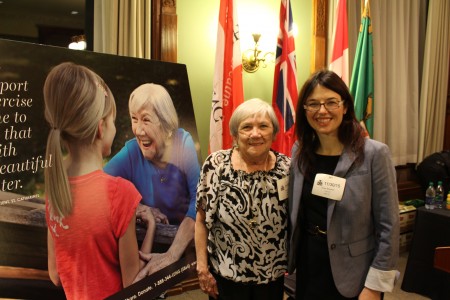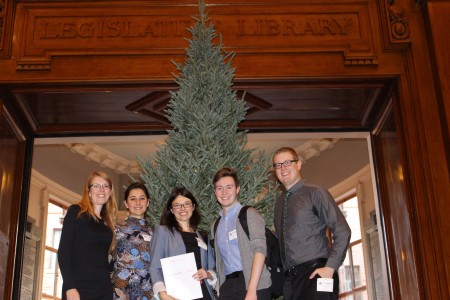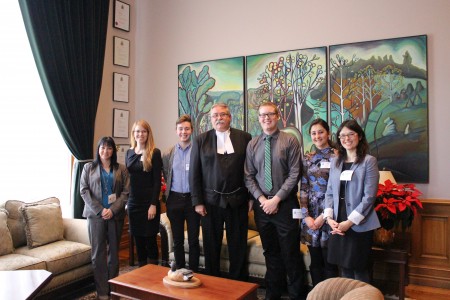Category Archives: News
The Bowdish lab is no longer accepting applications for summer positions 2016/17 thesis positions.
We are in the enviable position of being a popular lab and have received a large number of applications for a very small number of positions. We thank you for your interest but I’m afraid that we are no longer accepting applications but wish all the undergraduates searching for summer/thesis positions the very best of luck in their search.
Diversity – what does it mean to us in the Bowdish lab?
I’ve included this diversity statement on our “Lab Philosophy” page. It’s the first version and may be updated but do let us know what you think about it.
Diversity: Our lab values diversity because we believe that diverse viewpoints and opinions bring with them new perspectives and ultimately better, more creative, more innovative, science. We have members of diverse career stages (high school students to emeritus professors), diverse cultures (we’ve had all 6 continents represented in the lab and our potluck events are delicious!), and diverse upbringings, families, religions, opinions and viewpoints. We acknowledge that each of us brings with us perspectives shaped by our experiences as well as challenges and obstacles. By valuing and celebrating our differences and supporting each other to overcome our personal obstacles, we believe that our science will be the best it can be and, perhaps as importantly, that our trainees will get the support, validation and encouragement they need to be successful and increase the diversity of the scientific community as a whole.
The Bowdish lab will support one application for the M. G. DeGroote post-doctoral fellowship award.
The Bowdish lab will support one application for a PDF fellowship through this funding opportunity. To be competitive, applicants must have an excellent track record of publishing/presenting their PhD work and must write an application that clearly states how working at McMaster and in the Bowdish lab will further their career.
Potential projects include:
1) Discovery of novel immunotherapeutic drugs
2) Uncovering how the microbiota contributes to the aging process
3) Studying mouse models of polymicrobial pneumonia
4) Studying how monocyte function changes with age and contributes to infection
5) Others – please see the projects page for some of our current work.
Interested applicants should contact Dr. Bowidish with a c.v. and brief description of their research interests. Only applicants who have a strong publication record will be competitive for this application.
Don’t get #Grounded – get vaccinated for pneumococcal pneumonia
CFL legend Michael “Pinball” Clemons has partnered with the Ontario Lung Association on an exciting campaign to raise awareness of pneumococcal pneumonia. Launched in recognition of World Pneumonia Day, #Grounded includes a media tour and video. For each view of the #Grounded video or share of the hashtag on social media – Facebook or Twitter – $5.00 will be donated to the OLA! Here is the link. Please watch and share!
Publication: Infection in an aging population. Curr Opin Microbiol. 2015 Dec 10;29:63-67.
0″ height=”324″ />
Bowdish Lab attended Queen’s Park Lobby Day with the Ontario Lung Association!
Bowdish Lab attended Queen’s Park Lobby Day with the Ontario Lung Association!
On Monday November 30th, the last day of Lung Month, members of the Bowdish Lab joined the Ontario Lung Association to lobby for the Lung Health Act at Queen´s Park. PI Dawn Bowdish and four lab members, Andrea Kellner (visiting PhD candidate), Dessi Loukov (PhD candidate), Kyle Novakowski (PhD candidate) and Justin Boyle (undergraduate), advocated for increased funding for lung research through support of Bill 41: The Lung Health Act. It was a great honour to meet the Speaker of the Legislative Assembly of Ontario, David Levac and talk to him about the importance of lung health. This aim was well received and he encouraged the junior researchers to never stop pursuing their scientific goals. Afterwards the team had the opportunity to explore the stunning architecture and history of Queen´s Park, which first opened in 1860. Later the reception afforded the Bowdish lab the privilege to meet MPPs and organizing members of the Lung Association. One exceptional guest and supporter of the Lung Association is Walter Gretzky, who welcomed people warmly and never tired of giving autographs. Especially inspiring was the prospect of meeting people affected by lung diseases as well as people engaged to directly help them as respiratory educators. This emphasized the importance of research performed in the Bowdish Lab and for whom it is done for. In summary, the day highlighted how research and politics can work together to improve the lives of Ontarians and how democracy works in the context of health.
Novemer 12th is World Pneumonia Day – celebrate by getting vaccinated against influenza and pneumococcal pneumonia!
Novemer 12th is World Pneumonia Day – celebrate by getting vaccinated against influenza and pneumococcal pneumonia!
Hear the interview on Metro Morning with Matt Galloway here:
http://www.cbc.ca/news/canada/toronto/programs/metromorning/researchers-find-getting-the-flu-can-lead-to-other-diseases-1.3315848
Read about why older adults should be vaccinated against pneumococcal pneumonia and influenza, as profiled by the CBC here:
http://www.cbc.ca/news/health/flu-vaccines-mcmaster-1.3315511?cmp=rss
and here
http://www.cbc.ca/news/canada/toronto/programs/metromorning/pathologist-deeply-saddened-vaccines-distrust-1.3315893
To hear Dawn discuss the benefits of vaccination for older adults on London AM 960 The Pulse with Devon Peacock (airdate: Nov 13, 2015) click here:
http://www.am980.ca/the-pulse/
To read about the link between dementia and pneumonia:
http://www.atsjournals.org/doi/abs/10.1164/rccm.201212-2154OC#.VkTWTHarRaR
To read about the link between cardiovascular disease and pneumonia
http://jama.jamanetwork.com/article.aspx?articleid=2091304
Work in the Bowdish lab is funded by the Canadian taxpayer through the Canadian Institutes of Health Research, the National Science and Engineering Research Council, and through donations administered by the Ontario Lung Association.
The Bowdish lab is only taking on new graduate students for Fall 2016 if they have independent funding (i.e. CIHR, NSERC).
Thank you for your interest but all positions are full and we will not be taking on any new graduate students for Fall 2016. Students holding independent funding may contact Dr. Bowdish to discuss possibilities.
Avee Naidoo recognized for her research by the CIHR Institute of Aging.
As mentioned in an earlier post, Bowdish lab PhD student, Avee Naidoo, won the Fall 2014 CIHR Institute of Aging Anne Martin-Matthews Doctoral Research Prize of Excellence in Research on Aging and is mentioned in the CIHR’s Institute of Aging newsletter!






